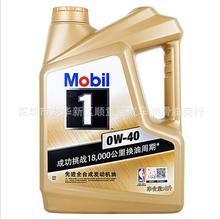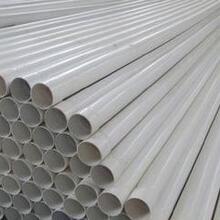National coin shortage: everything you need to know.
If you’ve been following local news lately, you’ve likely seen stories about businesses in your area asking customers to pay in exact change—or even to bring in their own coins, to be exchanged for paper bills. This is because of a strange effect of the pandemic: a coin shortage.
For answers to exactly how this happened and how it will end, here’s a brief explainer of this strange moment in the COVID-19 economy.
Why is there a coin shortage?
There are a few reasons, and they’re all connected to the pandemic.
The U.S. Mint, which produces coins, had been working at a limited capacity because of employee safety measures.
Large numbers of coins currently in circulation have also been, essentially, locked up in homes. Many Americans have been staying in more. They’ve ordered more things online or opted, out of fear of contamination, to pay for food and other in-person purchases with credit cards.
Some businesses that would normally be a hub for such transactions—coffee shops, bakeries, and other places that sell goods for under $10—have closed down or restricted payment methods.
There’s also an exchange problem: Some people have been avoiding going to banks, where they might otherwise have converted their coins into cash. Others might not have wanted to linger in grocery stores to use coin kiosks. This roadblock in the flow of coins led to a “significant” reduction of the number of coins that banks sent to the Federal Reserve, which manages the distribution of coins around the country.
AdvertisementAccording to Senay Agca, a finance professor at the George Washington University, “coin shortage” is not really precise terminology. “There’s enough coins, but it’s not circulating at the speed it was circulating before,” she said. As a result, some people have described it more as a “disruption.” (For simplicity’s sake, we’ll keep referring to it as a coin shortage here.)
Advertisement Advertisement AdvertisementAll of this added up to a real problem when businesses started to open and banks began ordering more coins, which the Fed didn’t have stockpiled in high enough numbers. According to the Fed, there is a projected monthly gap of 2.3 billion to 3.5 billion coins for the rest of the year.
Who does the coin shortage hurt most?
AdvertisementTo the average American, this shortage may only cause minor headaches—a harder time paying at a parking meter or exact change required at a coffee shop. But some 8 million American households, or 6 percent of Americans, are “unbanked,” meaning that because of fees and other financial hurdles, they have no checking, savings, or money market account. Many rely instead on services such as money orders, pawn shop loans, or payday loans. According to Venky Shankar, a marketing professor at the Center for Retailing Studies at Texas A&M University, Americans who make $25,000 a year or less use cash for around 45 percent of their purchases. So those Americans might struggle to pay for essential services without change on hand. They also might find it more stressful to round up or donate their change, should stores ask for it. “For an unbanked or underbanked person, it could leave them in a horrible situation if they don’t have access to the cards,” saidAngela Lyons, a professor of economics at the University of Illinois at Urbana-Champaign.
Advertisement AdvertisementSome small businesses, already hurting from the pandemic and working on tight margins, are also at risk. Customers might think twice about making a small purchase with cash if they have to dig through their pockets for exact change. “They’ll suffer,” Shankar said. “If they can’t hand back exact change or if they insist you must pay exact change, they’ll lose customers.”
AdvertisementLaundromats have been one of the hardest-hit businesses. Brian Wallace, the president and CEO of the Coin Laundry Association, said a large number of the 30,000 laundromats in the U.S. are vulnerable, given that some 56 percent accept quarters as their only form of payment. The issue is in how the industry works: Laundromats need to sustain a certain inventory of quarters in order to allow customers to be able to exchange their bills.“If we can’t make change, we can’t make money,” he said.
AdvertisementSome laundromats—most of which are small, family operations—have started informal quarter exchanges with one another, as well as with other coin-operated enterprises, such as car washes and vending machine businesses. According to Wallace, one owner even took to Facebook to ask friends and family to swap their coins out with him. It worked well, he said.
How will this end?
Advertisement AdvertisementThe Federal Reserve announced the formation of a U.S Coin Task Force on June 30 to deal with the issue. In recent weeks, the Mint has begun to return to something like normal operations, with safeguards in place to protect workers. The Mint is set to produce 1.65 billion coins every remaining month of 2020. (Usually, there are about 1 billion coins produced a month.) The Fed also started rationing coins, capping the amount banks can order from them, and said it was “encouraging” banks to only request the amount of coins they absolutely needed to meet immediate demand.
AdvertisementBanks and large retail chains have taken their own steps. To incentivize customers, some banks are offering additional cash when customers bring in their rolled coins. Some stores are giving change back through loyalty cards to be redeemed later, or are encouraging customers to leave their change, to be donated later to charity. Other businesses are simply rounding their payments to the nearest dollar.
AdvertisementNo one appears to expect that this coin shortage will last beyond the pandemic in any significant way. As states move away from public health restrictions, they’ll circulate cash and coins through again. The measures banks and stores are taking will likely help speed things along, and Shankar projects that the shortage would end in six to 18 months, depending on how well the country handles the upcoming months of the pandemic.
What does it mean for the future of the penny?
Advertisement AdvertisementThere a few potential longer-term changes to come out of this shortage. It may accelerate a long-simmering trend toward a cashless society. Technology has allowed the use of contactless payments through smartphones, and some have predicted that the anxiety over COVID-19 and the cleanliness of paper currency will cause more people than ever before to abandon cash. A coin shortage might have helped prime consumers to embrace the trend. “Right now, this whole COVID experience has set up this transition and shift and reliance on digital payments,” Lyons said. If paired with the right infrastructure, this change could eventually help supply better payment methods for the unbanked, who could benefit from forms of mobile payments without fees.
AdvertisementPopular in News & Politics
- I Watched Trump’s Lawyers Cross-Examine Stormy Daniels. It Was Painful.
- After a Rough Week of Testimony, Stormy Daniels Seems to Have the Upper Hand
- I Read the Embattled Columbia President’s Old Book About What We Owe Each Other. It’s … Not Good.
- Think You’re Smarter Than a Slate Staff Writer? Find Out With This Week’s News Quiz.
Other experts have been thinking more specifically about the coins themselves, and whether this shortage could cause movement in a decadeslong debate. Because of inflation, the penny costs around two cents to make. Abolitionists have long argued that we should simply round down to the nearest nickel, eliminating the need for a coin that they see as nothing but a drag. And rounding is exactly what some retailers will have to do now, possibly causing some of the public to become more comfortable with the idea. “Any time something new happens with coins, we look at the issues fresh,” said Jeff Gore, a professor of physics at the Massachusetts Institute of Technology and the founder of an organization called Citizens to Retire the Penny.
Advertisement Advertisement Advertisement AdvertisementThe New York Times reported in late July that the shortage has spurred “renewed discussions about the fate of the penny,” as it becomes harder to argue the Mint should spend resources manufacturing the penny in a shortage. Agca said she could imagine that the Fed would phase out some coins when it comes time to rein them in again, and it would make sense to drop the penny along the way. But Gore said he doesn’t see the penny issue really being resolved any time soon. “We have a lot of things on our mind right now,” he said.
Tweet Share Share Comment(责任编辑:新闻中心)
 New Grok response directs users to Vote.gov for election questions
New Grok response directs users to Vote.gov for election questions 年底小偷猖狂 扒窃案件呈高发态势
年底小偷猖狂 扒窃案件呈高发态势 数智赋能,助推连南生态产品“出山入湾”
数智赋能,助推连南生态产品“出山入湾” 农行广东分行为“超级工程”深中通道注入金融动能
农行广东分行为“超级工程”深中通道注入金融动能 14 Heists, Robberies, and Other Great Capers
14 Heists, Robberies, and Other Great Capers
- Freedom from Dissent
- 视频|到连州过周末,到连州吃宵夜!
- US urges N. Korea to refrain from raising tensions after resumption of reactor operations
- 负荷太高 变压器突然起火
- Wordle today: The answer and hints for August 29
- Investigators close in on Choi, seek Park grilling
- Maine voters double down on facial recognition ban in win for privacy
- Quantum well solar cell clocks world record efficiency of almost 40%
-
 本报讯近日,市教育局班子成员碰头会召开,听取近期有关工作落实情况汇报,安排部署下一步重点工作。会议要求,要狠抓工作落实,全面推进教育各项工作。全力推进川西教育中心建设,扎实开展省、市示范性普通高中、义
...[详细]
本报讯近日,市教育局班子成员碰头会召开,听取近期有关工作落实情况汇报,安排部署下一步重点工作。会议要求,要狠抓工作落实,全面推进教育各项工作。全力推进川西教育中心建设,扎实开展省、市示范性普通高中、义
...[详细]
-
厉害了清远农机手!喜获全省夏收水稻机收减损技能大比武一、三等奖
 厉害了清远农机手!喜获全省夏收水稻机收减损技能大比武一、三等奖_南方+_南方plus6月27日,由农业农村部机械化总站指导,广东省农业农村厅主办,广东省农业技术推广中心、阳江市农业农村局承办的2024
...[详细]
厉害了清远农机手!喜获全省夏收水稻机收减损技能大比武一、三等奖_南方+_南方plus6月27日,由农业农村部机械化总站指导,广东省农业农村厅主办,广东省农业技术推广中心、阳江市农业农村局承办的2024
...[详细]
-
 经销商如雨后春笋相继出现在雅安,新车频频上市充斥眼球,消费者纷纷掏出钱包跻身有车一族……回望即将走过的2010年雅安车市,只能用“繁荣”二字形容。然而,“繁荣”也是一把双刃剑,随着车市的火爆,关于汽车
...[详细]
经销商如雨后春笋相继出现在雅安,新车频频上市充斥眼球,消费者纷纷掏出钱包跻身有车一族……回望即将走过的2010年雅安车市,只能用“繁荣”二字形容。然而,“繁荣”也是一把双刃剑,随着车市的火爆,关于汽车
...[详细]
-
 “嘭!”一声巨响。4日晚7时20分左右,位于市区西门北路西门车站附近一变压器突然爆炸起火,并发出“呲呲”电流声,吓坏了周围群众。电力部门抢修人员接到报警电话后,迅速出动,40分钟内修复了此处变压器,恢
...[详细]
“嘭!”一声巨响。4日晚7时20分左右,位于市区西门北路西门车站附近一变压器突然爆炸起火,并发出“呲呲”电流声,吓坏了周围群众。电力部门抢修人员接到报警电话后,迅速出动,40分钟内修复了此处变压器,恢
...[详细]
-
 North Korean leader Kim Jong-un, right, attends a ceremony alongside his daughter, Ju-ae, to mark th
...[详细]
North Korean leader Kim Jong-un, right, attends a ceremony alongside his daughter, Ju-ae, to mark th
...[详细]
-
Crooks named Canada Soccer acting president
 MONTREAL:Former Olympic athlete Charmaine Crooks was named acting president of the Canadian soccer f
...[详细]
MONTREAL:Former Olympic athlete Charmaine Crooks was named acting president of the Canadian soccer f
...[详细]
-
Does monogamy work? This new book explores the controversial question.
 Unlike what you may have been told, monogamy isn't inherent to human biology. Moreover, it's not inh
...[详细]
Unlike what you may have been told, monogamy isn't inherent to human biology. Moreover, it's not inh
...[详细]
-
Iowa Senator owned by an extremely Midwest question about soybeans
 Republican Iowa Sen. Joni Ernst struggled with an incredibly Midwest gotcha question: She couldn't c
...[详细]
Republican Iowa Sen. Joni Ernst struggled with an incredibly Midwest gotcha question: She couldn't c
...[详细]
-
Best CPU Deals, AMD vs Intel: Holiday CPU Buying Guide
Earlier this week, we looked at GPU pricing and the market to see what sort of prices would truly co ...[详细]
-
 单身男女在相亲会上一起玩游戏本报讯 23日晚,市区某宾馆内洋溢着温馨、浪漫又甜蜜的气氛,70多名单身男女在主办方团市委的组织下齐聚一堂,参加一场名为“缘来是你”的大型相亲交友活动。据介绍,此次参加相亲
...[详细]
单身男女在相亲会上一起玩游戏本报讯 23日晚,市区某宾馆内洋溢着温馨、浪漫又甜蜜的气氛,70多名单身男女在主办方团市委的组织下齐聚一堂,参加一场名为“缘来是你”的大型相亲交友活动。据介绍,此次参加相亲
...[详细]
- Naver, Kakao strive to combat deepfake porn spreading online
- HTC's new, cheaper blockchain phone will run a full Bitcoin node
- 统一包装即将上新!连州水晶梨上市冲刺进行时
- South Korea's technological superiority challenged by North Korea's cyberattacks
- Google Gemini now allows AI
- 统一包装即将上新!连州水晶梨上市冲刺进行时
- N. Korea stages artillery drills off western coast for 3rd day: S. Korean military



